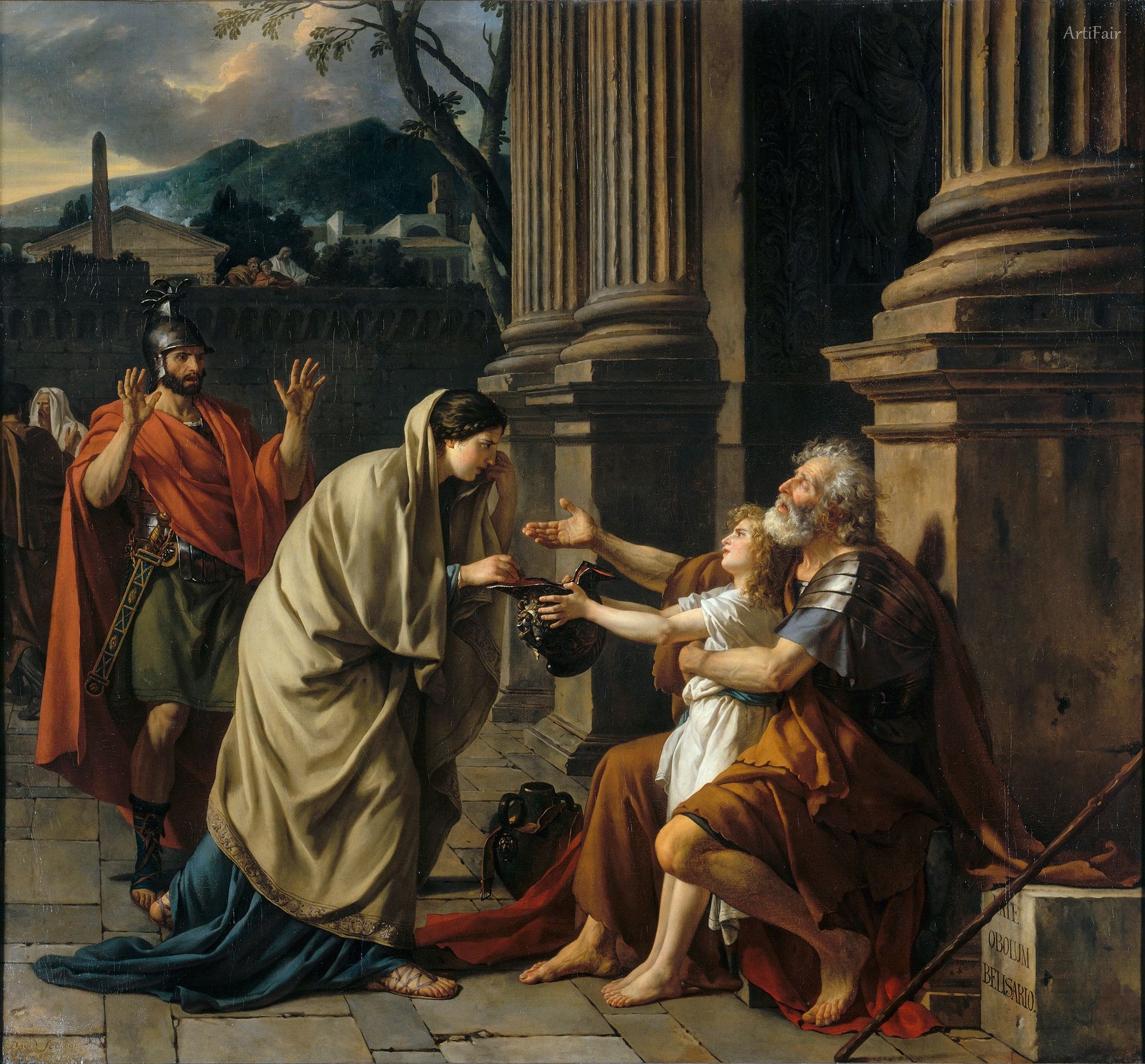
Art Appreciation
In this striking piece, the viewer is immediately drawn to the poignant scene unfolding between Belisarius and the benevolent figure before him. The aged general, depicted with a stricken visage and unkempt beard, embodies both dignity and despair. He kneels desperately on the stone pavement, a powerful reminder of how one's fate can drastically change. The woman, clad in a flowing cloak, extends a small vessel towards Belisarius, her gestures imbued with compassion yet marked by hesitation. Completing this intimate tableau, a child reaches forward, underscoring the innocence and vulnerability amidst this moment of charity.
The rich colors—deep reds, soft browns, and muted greens—convey warmth and simultaneously evoke a sense of sadness. The dramatic light illuminates the figures while casting soft shadows, effectively directing attention to the outstretched hands—a juxtaposition of hope and despair. The towering columns and distant hills suggest historical and cultural significance, grounding the emotional scene in a broader narrative. The work captures not only the personal anguish of Belisarius but also paints a commentary on societal roles; the noble and the destitute intertwine in a shared human experience, inviting viewers to reflect on their own perspectives of charity and dignity.